3 Must-Visit Slot Canyons in Utah
Utah's Slot Canyons
A slot canyon is a narrow channel eroded into rock (typically sandstone or other sedimentary rock) by water. They understandably take a long time to form.
The conditions for forming slot canyons must be ideal in southern Utah and northern Arizona, because there are a number of them there. Each one is unique. The width and length of them vary as does the height and color of the canyon walls.
Although Upper and Lower Antelope Canyons near Page, Arizona are arguably the most famous (and therefore the most visited) slot canyons in the area, there are three slot canyons near Escalante, Utah that receive a lot less traffic, but should be on your must-visit slot canyon list.
All three of them are located off Hole in the Rock Road, south of Escalante. They are located within the Grand Staircase-Escalante National Monument, which is public land managed by the Bureau of Land Management, so there are no fees to visit.
Spooky Gulch and Peek-a-Boo Slot Canyons
About 26 miles from the turnoff for Hole in the Rock Road (also known as BLM 200) is the turnoff for the Dry Fork Trailhead. This is the trailhead for what could be a day of exploring and includes Dry Fork Slot Canyon, Peek-a-Boo Slot Canyon, Spooky Gulch and Spooky Gulch Slot Canyon, and Brimstone Gulch.
I recommend prioritizing Peek-a-Boo Slot Canyon and Spooky Gulch Slot Canyon. To get to both of these canyons, follow the trail that goes more to the left and down into the gulch. Look for the cairns in the rocky sections. It should only take about 15-20 minutes to get to Peek-a-Boo Slot Canyon. Note: There’s another trail of sorts that continues to the right along the top of the ridge, which at some points gives you views from above of the slot canyons, but there’s no easy way to get from there down to the canyons.
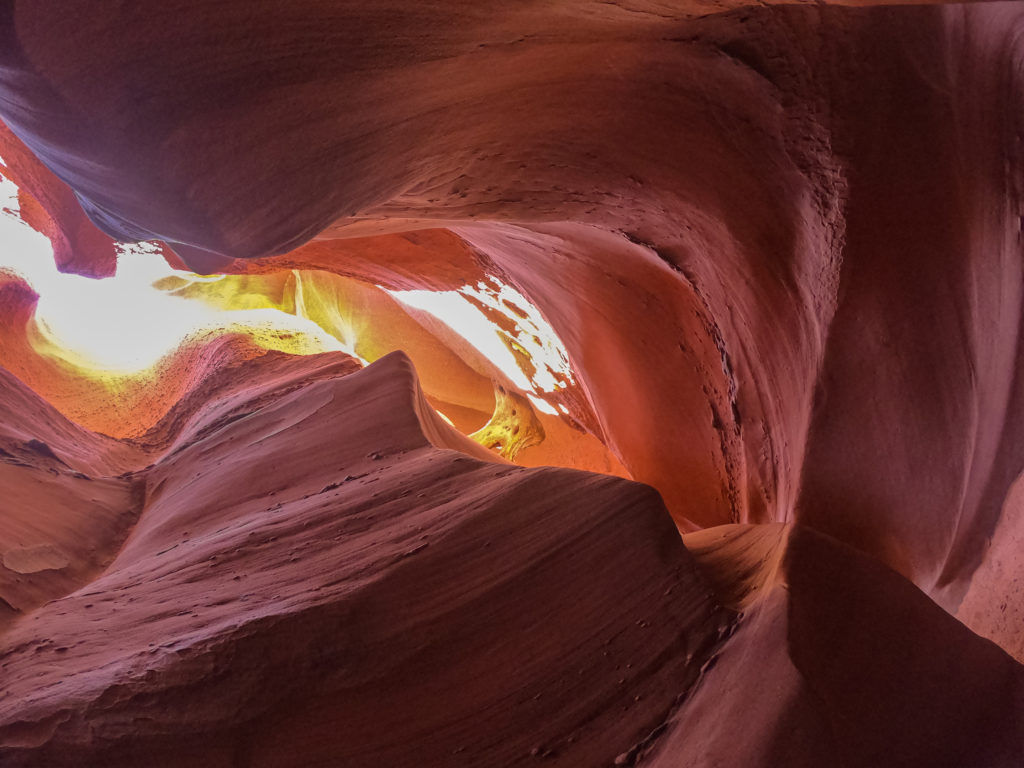
The traffic flow seems to encourage people to enter Peek-a-Boo Slot Canyon first and come out the top and then hike to the top of Spooky Gulch Canyon and do that canyon in reverse. There’s no one there enforcing that, so I actually hiked both canyons up and back. The only reason this can be problematic is that there are places, especially in Spooky Gulch where the canyon is barely wide enough for one person, so things can back up a bit with traffic going in both directions.
Peek-a-Boo Canyon is unique in terms of slot canyons, because there are sections of the canyon that are enclosed or connected at the top. Some of these create windows or portals that you climb through and make for interesting photos.
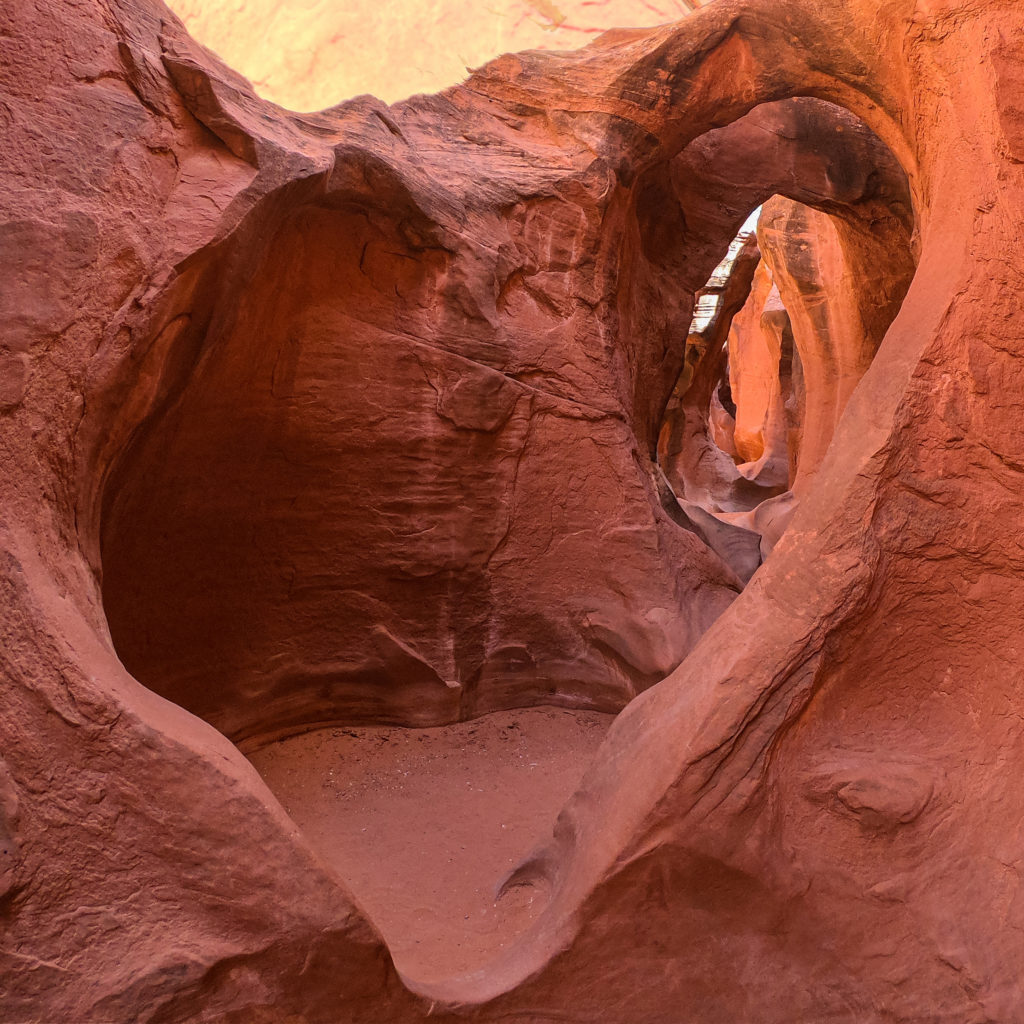
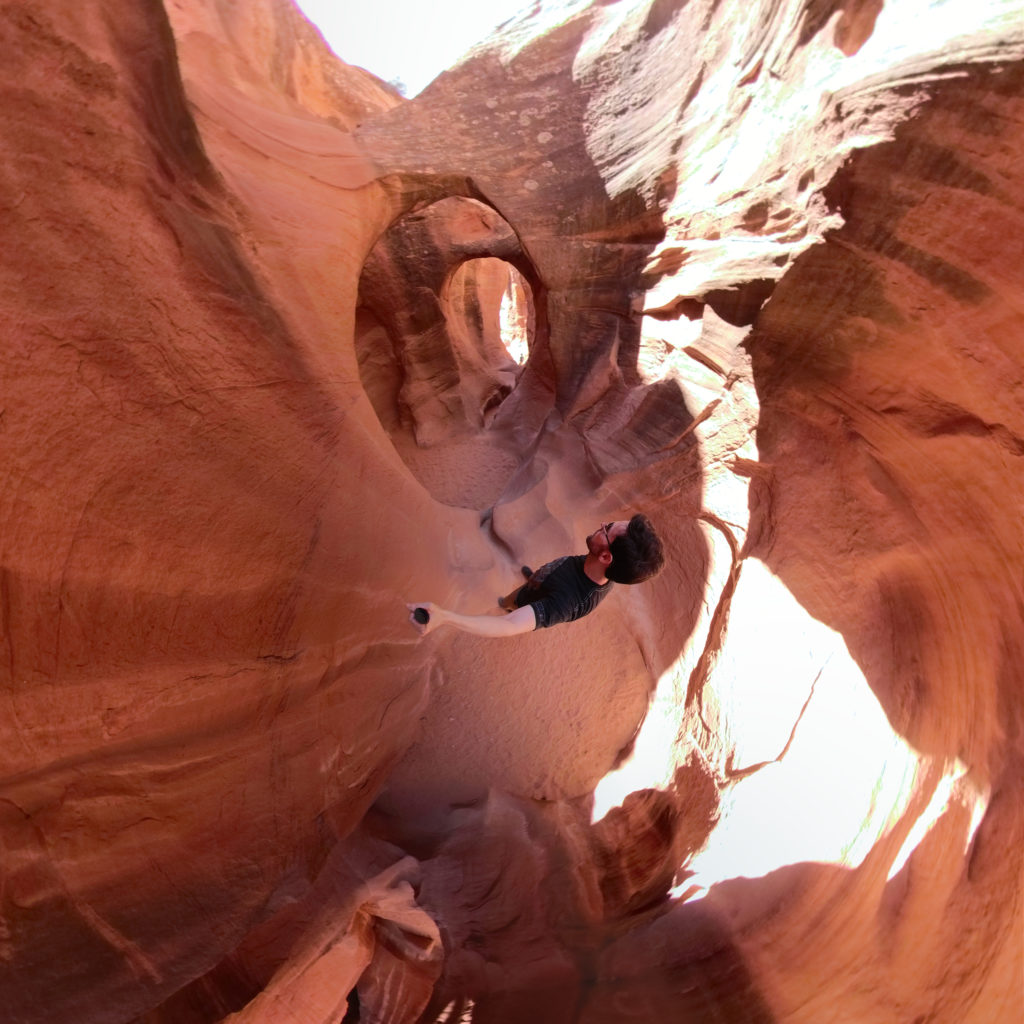
Both canyons require some low-level canyoneering skills. For example, getting into Peek-a-Book requires you to complete a short climb up a rock face. From there it’s not too difficult, until you get to the end and need to climb out.
Spooky Gulch has a drop near the top of the canyon that can be a little challenging. And if you’re claustrophobic, Spooky Gulch Slot Canyon may not be for you. There are multiple areas within the canyon that are so narrow that going through sideways is the only option.
But these narrow passages make for great photo opportunities. And without the crowds and the strict time schedule you’ll encounter at Antelope Canyon, you can take your time to admire the colors and shapes AND take photos.
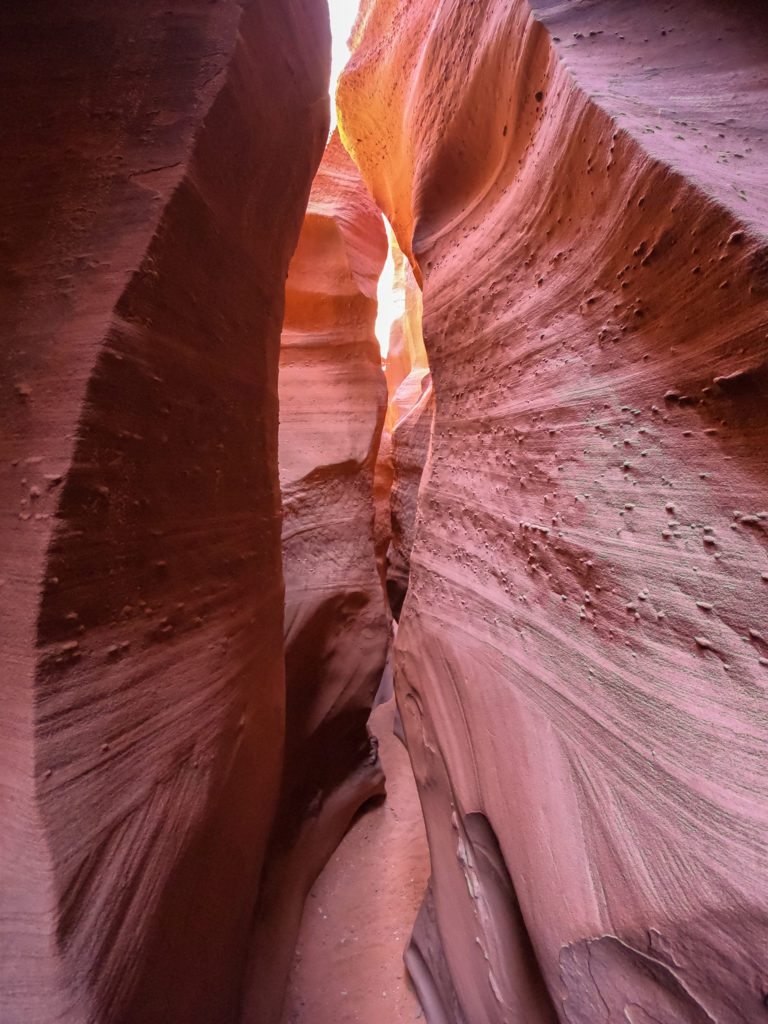
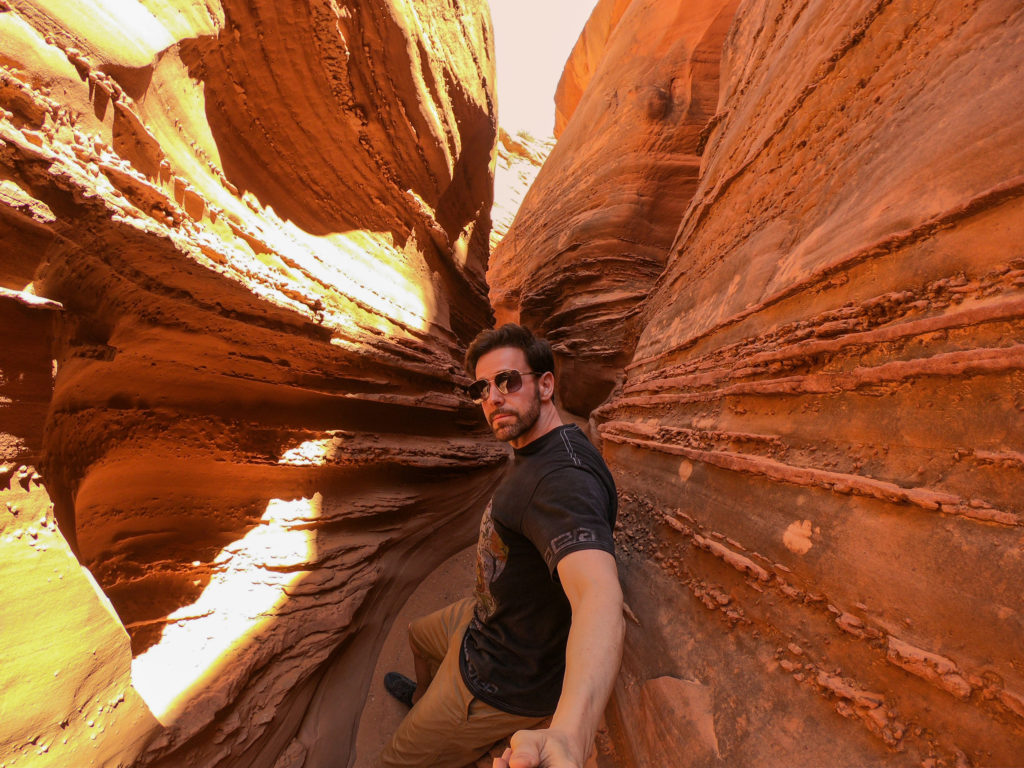
TRAVEL PICSTER TIP:
If you have a high-clearance 4×4 vehicle, you can drive all the way to the trailhead. If you do not, you’ll pass by a parking area about a mile from the trailhead. GPS coordinates for the trailhead parking area are 37.476579, -111.220267 or 37°28’35.7″N 111°13’13.0″W.
Zebra Slot Canyon
Just 18 miles north on Hole in the Rock Road is the trailhead for Zebra Slot Canyon. There is a small dirt parking area on the west side of the road. It’s easy to miss, so keep an eye out for it. After parking, walk across the road to the trail.
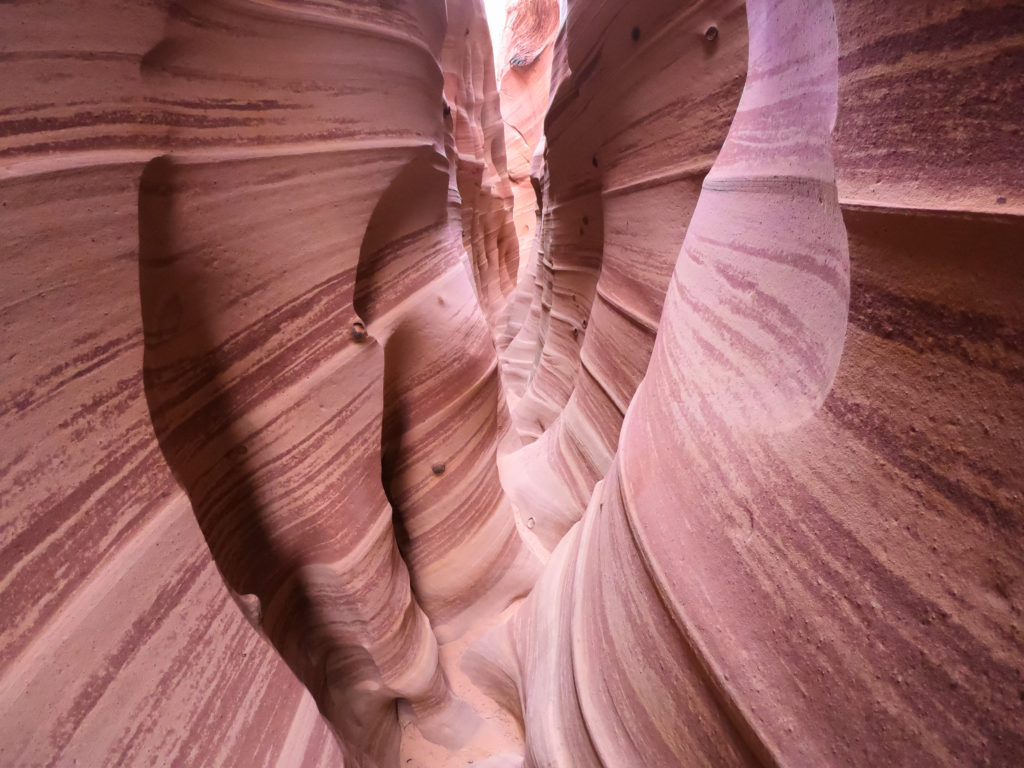
The hike to Zebra Slot Canyon takes about 40-50 minutes. The trail is easy to follow and in some parts very scenic. Only the last bit can be a little tricky. As the trail approaches Halfway Hollow and Harris Wash, it starts to splinter. You will want to follow Harris Wash to the LEFT. Going to the right will take you to Tunnel Slot Canyon, which you may want to visit as well.
The opening to Zebra Slot Canyon is fairly wide, but the canyon narrows quickly. When I went at the end of April, there was no water in the canyon. But I have read that there can be standing water in certain parts of the canyon (in some places waist deep).

The part of the canyon that gives it its name is the farthest part in. There is a narrow section that you will have to maneuver up and through to get to the stripey portion of the canyon, but it’s worth it. It’s truly unique as far as slot canyons go.
Make sure to take photos both from the entrance to the stripey portion and from the end of it. From one side the walls look smooth and wavy. From the other side they look quite angular. From both sides it looks really cool.
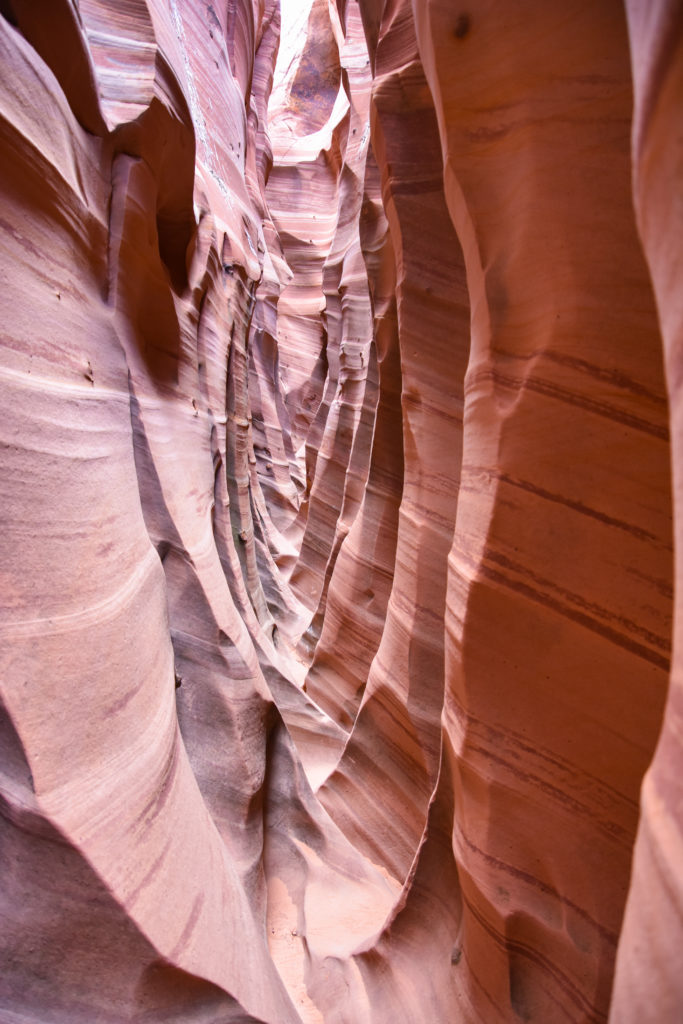
GPS coordinates for the Zebra Slot Canyon parking area are 37.639348, -111.445651 or 37°38’21.7″N 111°26’44.3″W.
TRAVEL PICSTER TIPS:
During the summer months it can get very during the day. Starting early is the best way to avoid the hottest part of the day. However, remember to plan ahead and take enough water.
While you’re on Hole in the Rock Road, I also recommend stopping by the Devil’s Garden. It’s located about 4.5 miles south of the Zebra Slot Canyon parking area.
For more information on Grand Staircase-Escalante National Monument, here’s the link to the Bureau of Land Management site: BLM – Grand Staircase-Escalante National Monument. Clicking it will open a new window/tab.